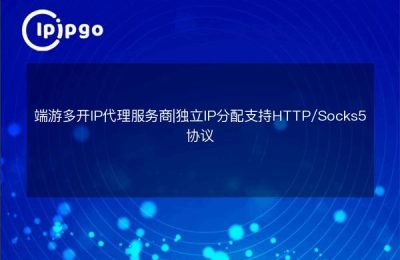
Tunneling proxy is a common network proxy method, which can help us to hide the real IP in the Internet, bypass geographic restrictions and improve privacy protection. In this article, we will detail how to build a tunnel proxy quickly. With some simple steps, you can have your own tunnel proxy server.
What is a tunnel agent?
Tunnel Proxy is a proxy that transfers data through a tunneling protocol such as SSH. It forwards your network traffic through an intermediary server that hides your real IP address and is able to encrypt data for increased security and privacy protection.
preliminary
Before you start building the tunnel agent, you need to prepare the following tools and resources:
- A server (can be a cloud server or a local server)
- SSH access to the server
- Basic Linux command line operations knowledge
Step 1: Install SSH server
First, we need to install an SSH server on the server. Most Linux distributions come with their own SSH server, and if you don't have it installed, you can use the following command to install it:
# For Debian/Ubuntu systems
sudo apt-get update
sudo apt-get install openssh-server
# For CentOS/RHEL systems
sudo yum install openssh-server
sudo systemctl start sshd
sudo systemctl enable sshdStep 2: Configure the SSH Tunnel
Next, we need to configure an SSH tunnel to forward traffic. Assuming you have a local computer and a remote server, we need to forward traffic from the local computer through the remote server.
Execute the following command on the local computer:
ssh -N -D 8080 user@remote_server_ipWhere `-N` means do not execute remote commands, `-D 8080` means listen on port 8080 locally and forward traffic through the remote server, and `user@remote_server_ip` is your remote server login information.
Step 3: Configure Browser Proxy
After completing the above steps, we need to configure a proxy in our browser to access the Internet through an SSH tunnel. Below are the steps to configure it using Firefox browser as an example:
- Open Firefox, click on the menu button in the upper right corner and select "Options".
- In the "General" tab, scroll down to "Network Settings" and click "Settings".
- Select "Manual Proxy Configuration", enter `127.0.0.1` in "SOCKS Host", and fill in `8080` for the port number.
- Make sure that the "SOCKS v5" protocol is selected and click "OK" to save the settings.
Step 4: Verify that the proxy is in effect
Once the configuration is complete, you can visit some IP lookup sites (such as ipinfo.io) to verify that the proxy is working. You should see that the IP address displayed is the remote server's IP, not your local IP.
Building a Tunnel Proxy with Python
If you prefer the programmatic approach, you can also use Python to build a tunnel proxy. Here is a simple example:
import paramiko
from sshtunnel import SSHTunnelForwarder
server_ip = 'remote_server_ip'
server_port = 22
username = 'your_username'
password = 'your_password'
local_bind_address = ('127.0.0.1', 8080)
remote_bind_address = ('127.0.0.1', 8080)
with SSHTunnelForwarder(
(server_ip, server_port), with
ssh_username=username, ssh_password=password
ssh_password=password, local_bind_address
local_bind_address=local_bind_address,
remote_bind_address=remote_bind_address
) as tunnel.
print("Tunnel is open")
# Add your code here to make a network request using a proxy
# Example: requests.get("http://example.com", proxies={"http": "socks5://127.0.0.1:8080"})summarize
With the above steps, you have successfully built a tunneling agent. Either through the command line or programmatically, you can easily configure and use the agent. I hope this article can help you better understand and build a tunneling agent, if you have more questions, please feel free to ask!








